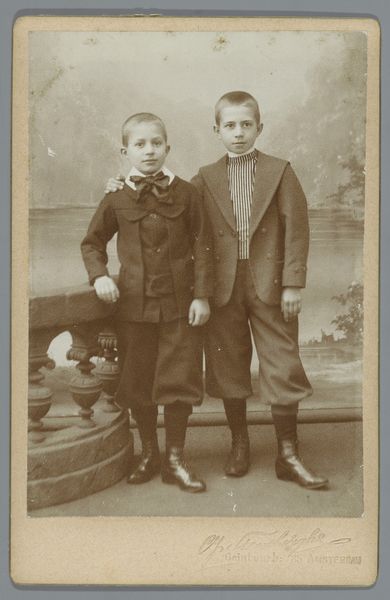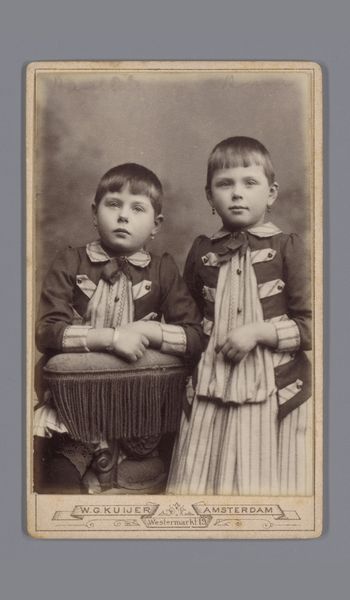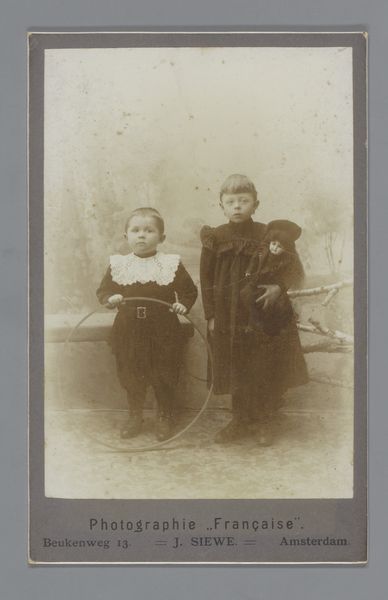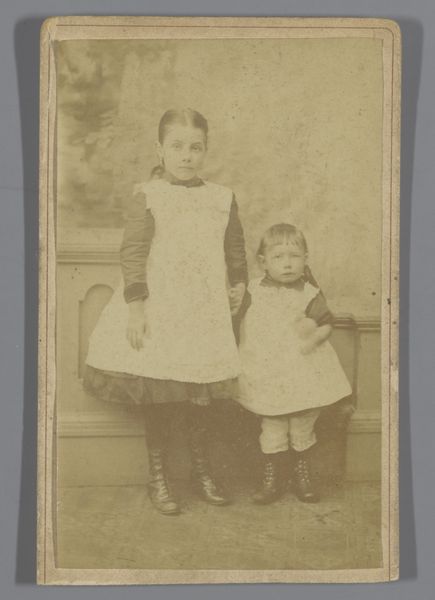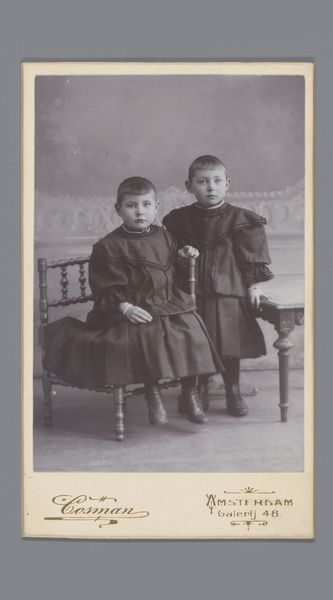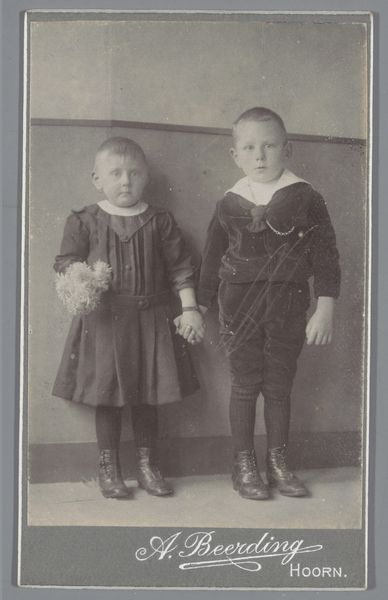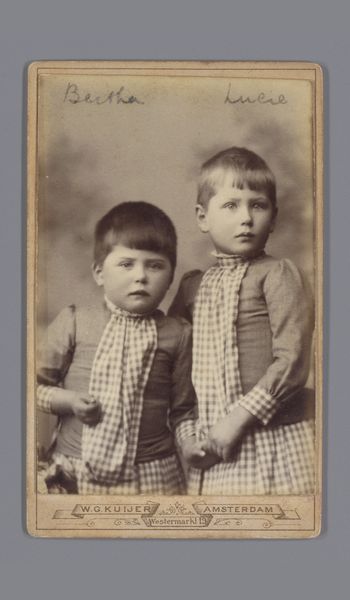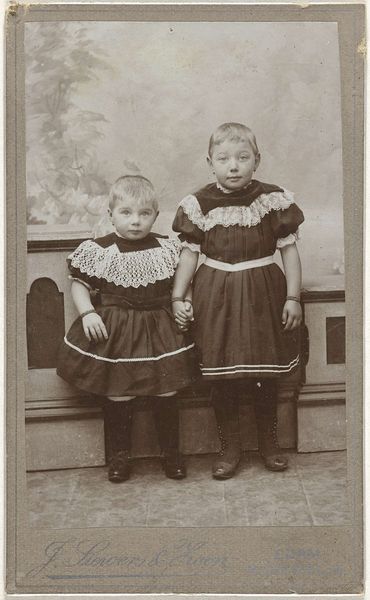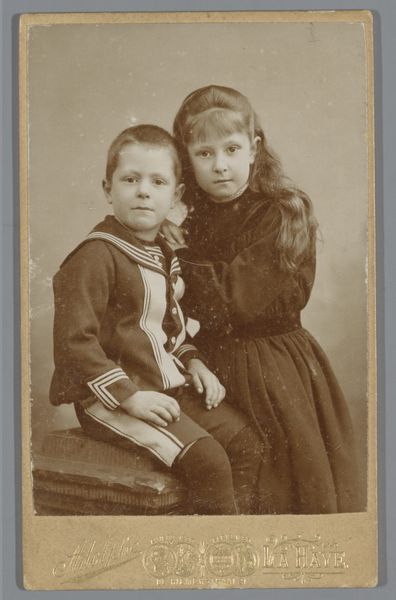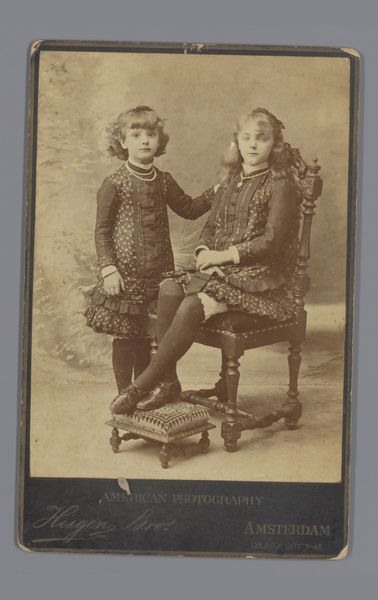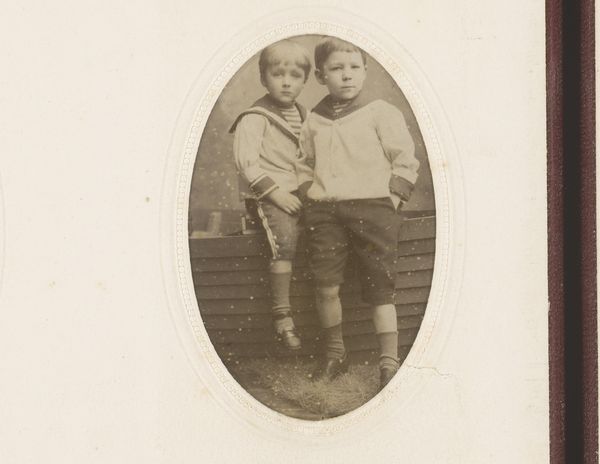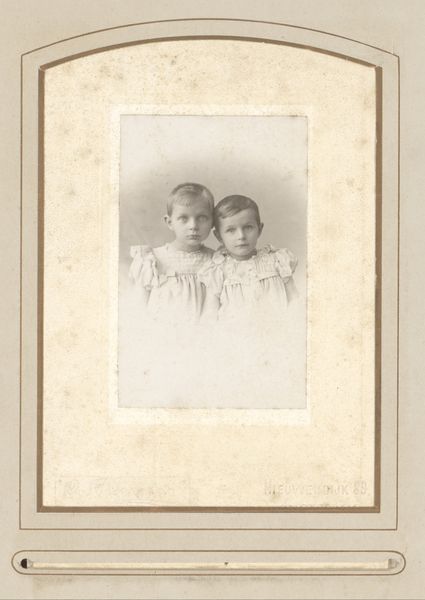
photography, gelatin-silver-print
#
portrait
#
photography
#
gelatin-silver-print
#
genre-painting
Dimensions: height 103 mm, width 63 mm
Copyright: Rijks Museum: Open Domain
Curator: Immediately I’m struck by how earnest and perhaps a little sad they seem. Is it simply the style of the period, or something more? Editor: We’re looking at "Portret van Annie en Pauline," a gelatin-silver print made sometime between 1885 and 1906 by W.G. Kuijer & Zonen. Gelatin-silver prints were a popular photographic process because of their stability and tonal range; this one uses those qualities to create a sense of timelessness, even in its slightly faded state. I’m interested in the contrast between the stiff formality of the studio portrait and the visible effort made in dressing them. Curator: Indeed. The military-style jackets combined with those elaborately striped dresses is jarring. What statements do you believe this is saying regarding childhood identity, gender, and privilege during that era? Editor: Well, children’s clothing in the late 19th century was highly coded, reflecting aspirations and societal norms, the construction, materials, and the labor involved are significant here. Their matching outfits could reflect social class; uniforms and tailored garments indicated affluence and status, but also point towards societal expectations on them both. Curator: That’s very insightful. What do you read in the choice of presenting them side by side? I would ask how the image creates, negotiates, and reinforces prevailing standards about representation and perhaps idealized social identities in that timeframe. Editor: Absolutely! Consider, this image can either perpetuate or resist certain accepted beliefs. Two subjects close together signify intimacy or maybe familial ties. The way they are dressed identically erases individuality, even if unintentionally, perhaps signifying restrictive gender conventions during that period. The floral basket, its manufacture of note, complicates the scenario with beauty as well as femininity expectations for women. Curator: That reading helps us better understand it. I keep coming back to the physical object—the print itself. The way this specific chemical process translates light and shadow affects its overall presence, a testament to a different form of production and consumption, something that feels so tangible today. Editor: Agreed. Viewing their clothing from an activist viewpoint sheds a lot more insight, and considering materiality will enhance our engagement regarding representation in visual cultures, challenging long accepted standards with insightful views just now emerging through critical views such as ours!
Comments
No comments
Be the first to comment and join the conversation on the ultimate creative platform.
